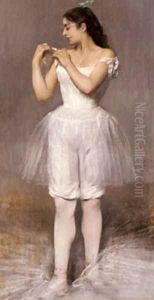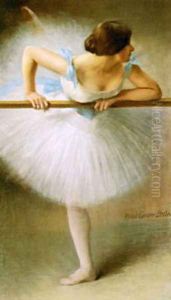Carrier-belleuse Pierre Paintings
Albert-Ernest Carrier-Belleuse, known as Pierre Carrier-Belleuse, was a prominent French sculptor who was born on June 12, 1824, in Anizy-le-Château, Aisne, France. He is often remembered for his decorative and figurative works which embody the lavishness of the Second Empire in France and the early tendencies of the art nouveau movement. His full name, which is less commonly used, is Albert-Ernest Carrier de Belleuse.
Carrier-Belleuse began his artistic education at the École des Beaux-Arts in Paris. He was a student of David d'Angers and the painter and sculptor James Pradier. He quickly established himself as a prolific artist, skilled in the creation of allegorical figures, busts, and statues. His work was characterized by a dynamic expression of form and detail, reflecting the opulent styles of the period.
During the 1850s, Carrier-Belleuse enjoyed considerable success and began to receive commissions for decorative sculpture for various public buildings in Paris, such as the Louvre and the Opéra Garnier. His work was not limited to France, however, as he also contributed to the embellishment of buildings in England, including the Royal Exchange in London.
One of his most significant contributions to the art world was his role as a teacher and mentor. Among his many pupils was the young Auguste Rodin, who worked in Carrier-Belleuse's workshop between 1864 and 1870. This mentorship was crucial to the development of Rodin's career, and the influence of Carrier-Belleuse’s style and approach to sculpture can be seen in Rodin's early works.
Carrier-Belleuse was also involved in the design and production of porcelain and bronze artworks, working with major manufacturers such as the Sèvres porcelain factory and the Minton pottery firm in England. His artistic output was varied, and he was adept at adapting his style to suit the medium he was working with, whether it was marble, bronze, or porcelain.
Albert-Ernest Carrier-Belleuse passed away on June 4, 1887, in Sèvres, leaving behind a legacy that had a lasting impact on the development of French sculpture. His works continue to be admired for their technical mastery and their embodiment of the spirit of an era that valued ornate beauty and elaborate decoration.



